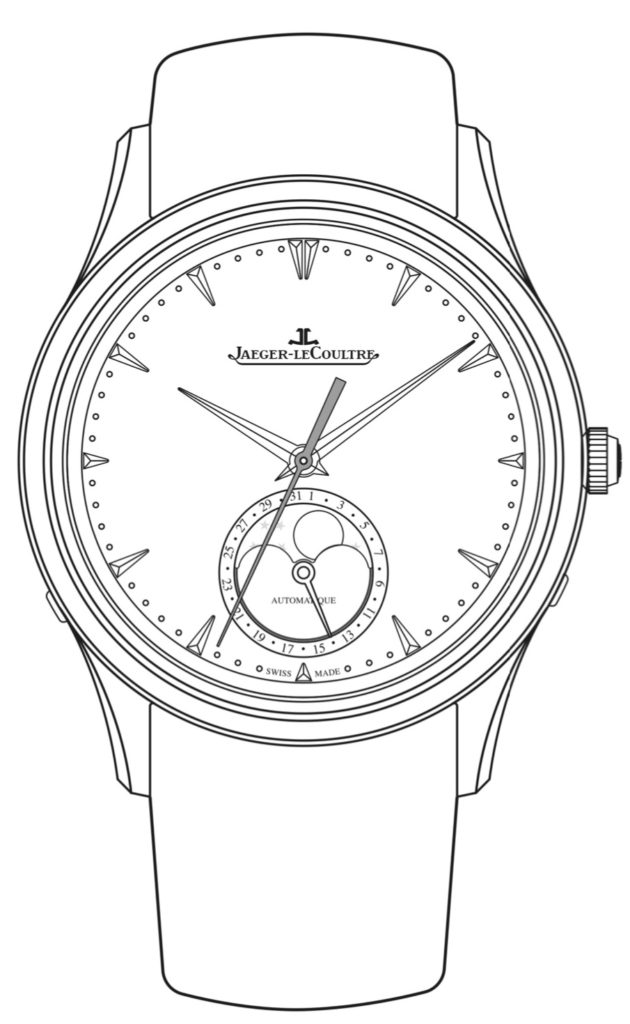Is A Swiss Watch Worth The Money?
Some years ago, I used to travel to Switzerland very often, it was my second home. But before developing an interest in watches, I couldn’t care less but like some things in life: you see, you read, you ask, you understand, you try and perhaps you like it.
I think that at some point in our lives, we all feel some sort of connection with a brand. It doesn’t matter if it’s watches, clothes, cosmetics, cars, technology, food or any other. Somehow, we find our way to be connected with something. If we talk about watches, first thing coming to mind it’s always Swiss. A country that earned its reputation for being a respectable watch maker for centuries. Reputation comes with a cost. Is it worth the money?
Let’s have a look at the Master Ultra-Thin Moon watch by Jaeger-LeCoultre (JLC), often considered one of the most sophisticated and extraordinary innovators of luxury timepieces. The watchmaker of the watchmakers. Their watches are a culmination of superlative craftsmanship, artistry and imagination.

Accuracy
The accuracy of watch models with mechanical movements is determined by the balance wheel. This oscillates at a rate of 28,800 vibrations per hour.
Wait… What Does It Mean Mechanical?
There’s 2 type of watches. Those powered by a mechanical movement and those by a battery (quartz). Mechanical are made up of hundreds of parts and assembled by hand. Because of this they are more expensive than quartz. A true watch lover will go for a mechanical movement, either manually wound or automatic.
Parts & Power Reserve
As mentioned before, there’s hundreds of parts assembled by hand in a mechanical movement watch. In this case, the Master Ultra-Thin Moon has 253 parts and a 38-hour power reserve which is very impressive.
How about the Size?
When buying a watch, it’s important to look at case sizes. Traditionally for men, something around 30-36 mm was considered OK. Nowadays, there’s a wider variety of larger cases. For example, the Master Ultra-Thin Moon is at 39 mm. I personally like this size but some people might want to go for 42 mm. At the end of the day, it will be a mix of your wrist size and your personal preference.
Water Resistance
This watch is water resistant up to 5 bar. This means that this watch has been tested at an overpressure of 5 bar, corresponding to an immersion pressure of 50 metres (1 bar = ±10 metres).
Moon Phase
This is a recreation of the different phases of the moon. It relays the 29.5-day lunar cycle by exhibiting the current moon phases in an aperture on the dial. This is indeed a fascinating watch complication which I really love about JLC. Of course, there’s other models with chronographs, time zones, annual calendars and other complications. It’s up to you to strike the right balance.
1,000 Hours Control Test
This is a classic JLC test. They go beyond the industry standards in terms of quality and final checks. These tests include checks to ensure regularity of rate, resistance to variations in temperature and atmospheric pressure, ability to withstand shocks and magnetic fields, as well as water resistance.
Insurance
If you are going to put some serious money, then like any other valuable item it’s worth protecting it. You can check the market and see what makes sense for your budget.
Know Your Budget
Swiss watches can go from £500 to £5,000,000. This is a wide range. Do your homework. How much do you want to invest? Set yourself a range based on your income. Don’t get yourself in debt to buy your watch. You should only buy it when your financial situation allows. When doing your research, you’ll probably start discovering watch makers reputation, prices, complications and other relevant metrics for your decision. If you plan to get a one watch for “life” then take your time and understand what this really means. If you plan to start a collection, then go in stages. Don’t try to start with the Holy Trinity. In other words, avoid the “Big Three” as a starting point. These are Patek Philippe, Audemars Piguet and Vacheron Constantin. These are super expensive watches that you would appreciate more when the moment comes. Oh, Rolex is not part of the Big Three? Nop! This selected club has to do with history and always producing “haut de gamme”. Rolex has never been an “haut de gamme” manufacturer. OK, but why Jaeger-LeCoultre is not part of the Big Three? One can challenge that they have a long history and amazing complicated and insane movements (even used by all Big Three!) but the fact that they were a movement supplier for some time rather than a producer of finished watches, exclude them from the Big Three.
Under £500
OK, here’s the thing. It might be challenging to find a mechanical movement for this price. So realistically you’ll only have Swiss quartz watches which are powered by a battery instead of a spring. You might be able to find Certina, Tissot or Bulova. No shame in buying a quartz watch but if you can wait and save a bit more, then consider a mechanical.
£500 – £3,000
If this is going to be your first Swiss watch, this can be an interesting segment. Automatic or manually-wound mechanical movements are your options. Brands to keep in mind: Frederique Constant, Longines, Rado, Oris and Tudor. These brands also offer more expensive ones falling in the next range but they have some decent entry level watches.
£3,000 – £5,000
It’s getting interesting. Many watch makers fall in this category. You can find Omega, TAG Heuer and some Breitling. You might even find an entry level Rolex such as the Oyster Perpetual.
£5,000 – £20,000
The majority of the market is here. You have Zenith, Rolex, IWC, Hublot, Jaeger-LeCoultre, Breguet and Piaget.
Above £20,000
You’ll start seeing the same watch makers from the previous segment but with more premium offerings. For example, Master Ultra-Thin Perpetual Calendar (Jaeger-LeCoultre), Portugieser (IWC), Horloge Spirit (Hublot), Cellini Moonphase (Rolex), Altiplano (Piaget), Marine Chronograph (Breguet). And of course, the Holy Trinity or “Big Three”: Patek Philippe, Audemars Piguet and Vacheron Constantin.
As you can see there’s a lot of facts and if you feel you’re ready, congratulations! This is a fun journey and you should enjoy the process 😉



